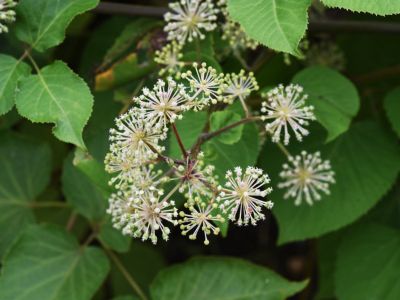What is a Spikenard Plant?
Spikenard shrub information tells you that this is a native plant, growing in the wild in many states in the eastern part of the country. You’ll find several varieties, including California spikenard (Aralia californica), Japanese spikenard (Aralia cordata) and American spikenard (Aralia racemosa). The plants grow to the height of shrubs, some rising to six feet (1.8 m.) tall. However, they are really perennials, dying back in fall to resprout again from the roots in spring. If you start growing spikenard plants, you’ll love the large oval leaves, toothed around the edges. And come summer, the branch tips hang heavy with yellow flower clusters, attracting bees. By autumn, the flowers are gone, replaced by burgundy toned berries. These provide food for wild birds. At the same time as the berries appear, the leaves begin to turn gold, providing a stunning contrast.
Spikenard Cultivation
If you want to start growing spikenard plants, you’ll need to get the right site. In the wild, spikenard plants grow in shady woodlands and thickets. Select a site offering the same elements. Companions should also be a consideration. Spikenard plants are big and leafy, and will easily overshadow anything delicate. You’ll do best to plant spikenard with big, showy plants like hosta, a shade-tolerant perennial with similar growing requirements. Ferns are another companion to consider planting if you are growing spikenand plants. Think large fern varieties like the East Indian holly fern (Arachniodes simplicior ‘Variegata’). These native plants need a part sun/part shade location with protection from winds. To begin spikenard cultivation, plant spikenard seeds in moist, well-draining soil. Spring planting should wait until all chance of frost is past. For those growing in cool climates, you can start the seeds indoors. Then transplant the young seedlings to their permanent location in spring, again after the threat of frost is over. Don’t wait for the plants to establish to transplant them, as it is difficult to move these plants once they are mature. That makes it important to pick an appropriate site the first time.
